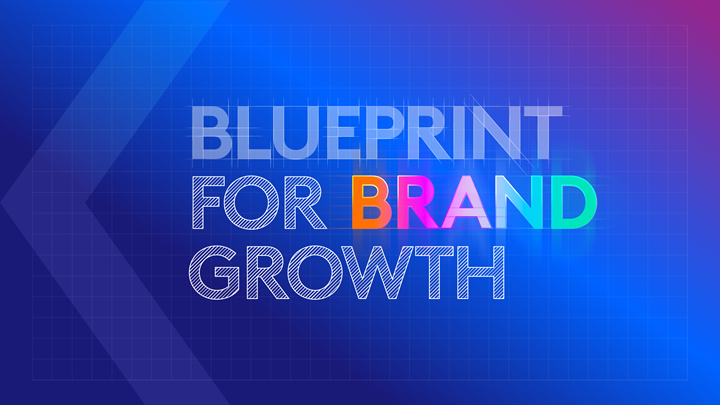In a world redefined by economic pressure, digital overload, and AI acceleration, financial brands face a brutal truth: playing it safe is no longer playing to win.
Creative effectiveness in financial services has flatlined. And the consequences are measurable. Kantar’s latest Creative Trends and Insights Report finds that ads from Financial Services brands consistently underperform across every major metric, from attention and emotional engagement to distinctiveness and brand linkage. Worse, consumers are telling us outright: your advertising isn’t relevant. According to Kantar’s upcoming Women’s Financial Freedom study, only 45% of U.S. female household financial decision-makers and 51% of household decision makers find financial advertising speaks to their lives.
This isn’t a messaging gap. It’s a strategic chasm.
The Root Problem? Financial brands are speaking from the Institution, not to the Individual.
For decades, financial marketing has been structured, serious, and authoritative. But today’s consumers, especially Millennials and Gen Z, aren’t looking for institutions to tell them what to do. They’re looking for brands that walk alongside them. Brands that understand their personal context, reflect their communities, and speak with cultural fluency.
And here’s where it gets urgent: attention to ads overall is declining 31% year after year. Creative sameness, templated formats, and AI-generated monotony are flooding the ecosystem. The result? Brands are paying more to say less and being remembered even less often.
And here’s where it gets urgent: according to Kantar’s Creative Effectiveness Trends report, attention to ads overall is declining 31% year after year. Creative sameness, templated formats, and AI-generated monotony are flooding the ecosystem. The result? Brands are paying more to say less and being remembered even less often.
But there’s a way forward. And the data is clear.
Five Strategic Imperatives for Creative Breakthrough
Kantar’s analysis of over 2,300 financial services ads reveals what works and what doesn’t. Here’s how progressive brands are breaking the creative deadlock:
Prioritize Meaningful Difference
Financial brands are stuck in a sea of sameness. Kantar’s BrandZ data shows that Meaningfully Different brands grow faster, build stronger equity, and command pricing power. The strongest ads don’t just tell people what you do. They show why it matters.
Mastercard’s “Touch Card” campaign challenged category norms by designing for accessibility, turning functionality into emotional leadership.
Strategic takeaway: Distinction isn’t decoration. It’s a growth lever.
Humanize the Experience
Ads that evoke joy, empathy, or humor outperform. Period. Yet too many Financial Services ads remain stuck in rational messaging and miss the chance to forge emotional connection.
Our data shows that emotionally powerful ads are 3.1x more likely to boost brand appeal. Consumers aren’t making immediate decisions, but they are forming long-term memories. Emotion helps frame those memories positively.
Strategic takeaway: Financial marketing must feel more like storytelling, less like a prospectus.
Design for Attention, Not Just Reach
Attention isn’t free and right now, it's in short supply. Kantar’s LINK database shows that creative attention (both passive and active) correlates directly with short-term sales lift. Yet too many ads fail to break through, particularly on digital platforms where 75% of budgets are spent.
Capital One’s 6-second “Magic” spot proves it can be done: clever wordplay, celebrity power, and sharp branding, all before the scroll.
Strategic takeaway: Digital-first creative needs to respect context, not just compress copy.
Market to Communities, Not the Crowd
The future of financial growth lies in cultural relevance not mass messaging. From Gen Z side hustlers to Hispanic small business owners, personalization is no longer optional. It’s the path to scale. Digital ads deemed “highly relevant” are 69% more likely to drive purchase intent. That’s not segmentation, it’s strategy.
Strategic takeaway: Brands must code-switch adapting voice, visuals, and values to reflect the people they serve.
Reframe AI as a Human Enabler
Consumers are curious about AI but they’re also cautious. Our data shows 94% of Americans are concerned about how it’s used in marketing. The creative response? Less technical jargon, more real-world value. Adobe’s AI-powered Photoshop campaign didn’t spotlight the tool it spotlighted what it made possible. Financial brands must do the same.
Strategic takeaway: Explain the benefit, not the algorithm. Technology is the means. Humanity is the message.
The Opportunity Ahead
We’re in a moment of brand reckoning. Financial services have long underdelivered on creative impact but not because the category lacks potential. It’s because the playbook hasn’t kept pace with the world.
The strongest performers act differently. They’re auditing their assets for distinctiveness. They’re using tools like LINK+ to validate creative before launch. They’re applying Kantar’s Blueprint for Brand Growth with intention not as a slogan, but as a system for making brands meaningfully different.
Because here’s the truth: creative is no longer a surface-level tactic. It’s a strategic differentiator. And in a category where differentiation is rare, that’s the edge.
Ready to Lead?
Kantar’s Creative Trends in Financial Services report launches in August. It’s packed with breakthrough case studies, brand diagnostics, and data-backed recommendations for financial marketers who are ready to rethink everything.
This isn’t about making ads that are “less boring.” It’s about building brands that are more human, more relevant, and more ready for the future.
Now’s the time to break the formula and set the standard.
Let’s talk about how your brand can lead the category. Get in touch today.




